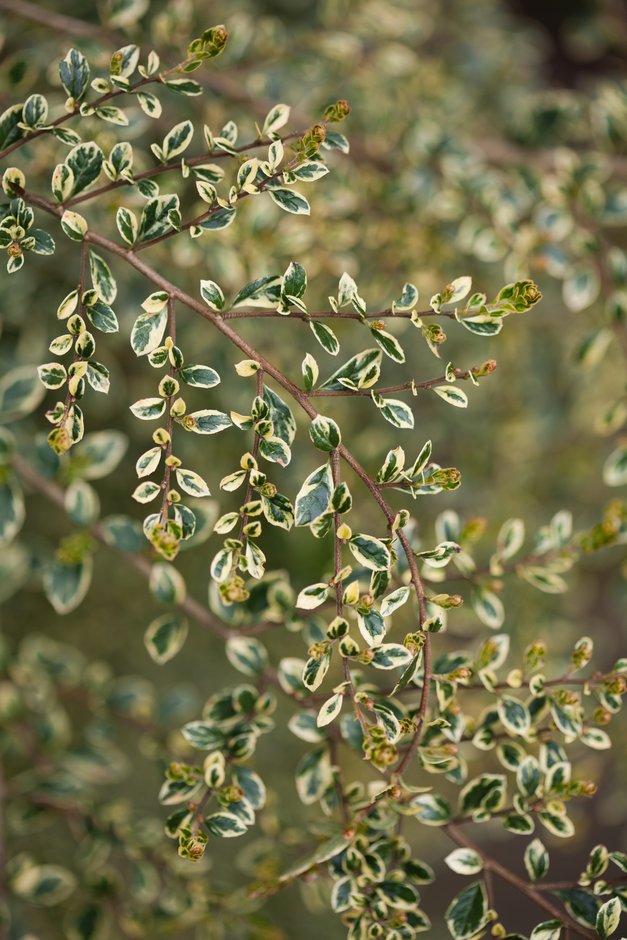Azara microphylla 'Variegata' (v)
variegated box-leaf azara
An evergreen shrub or tree with small, glossy dark green leaves broadly edged with cream, and tiny vanilla-scented yellow flowers in late winter or early spring, occasionally followed by dull orange berries
Size
Ultimate height
4–8 metresTime to ultimate height
20–50 yearsUltimate spread
2.5–4 metresGrowing conditions
Moisture
Moist but well–drained, Well–drainedpH
Acid, Alkaline, NeutralColour & scent
| Stem | Flower | Foliage | Fruit | |
| Spring | Yellow | Cream Green | ||
|---|---|---|---|---|
| Summer | Cream Green | Orange | ||
| Autumn | Cream Green | |||
| Winter | Yellow | Cream Green |
Position
- Full sun
- Partial shade
Aspect
South–facing or East–facing
Exposure
Sheltered Hardiness
H4Botanical details
- Family
- Salicaceae
- Native to GB / Ireland
- No
- Foliage
- Evergreen
- Habit
- Bushy
- Genus
Azara are evergreen shrubs or small trees with simple leaves, often in unequal pairs, and very small, fragrant yellow flowers with prominent stamens in clusters or spikes from the leaf axils, occasionally followed by white or pale purple berries
- Name status
Accepted
How to grow
Cultivation
Favours a sheltered position in sun or partial shade with a deep, humus-rich soil. Shelter from cold, drying winds
Propagation
Propagate from semi-hardwood cuttings in summer
Suggested planting locations and garden types
- Cottage and informal garden
- Flower borders and beds
Pruning
Pruning group 8 or pruning group 13 for wall-trained specimens
Pests
Generally pest-free
Diseases
May be susceptible to honey fungus in gardens where it is present but insufficient data to determine degree of susceptibility
Get involved
The Royal Horticultural Society is the UK’s leading gardening charity. We aim to enrich everyone’s life through plants, and make the UK a greener and more beautiful place.
